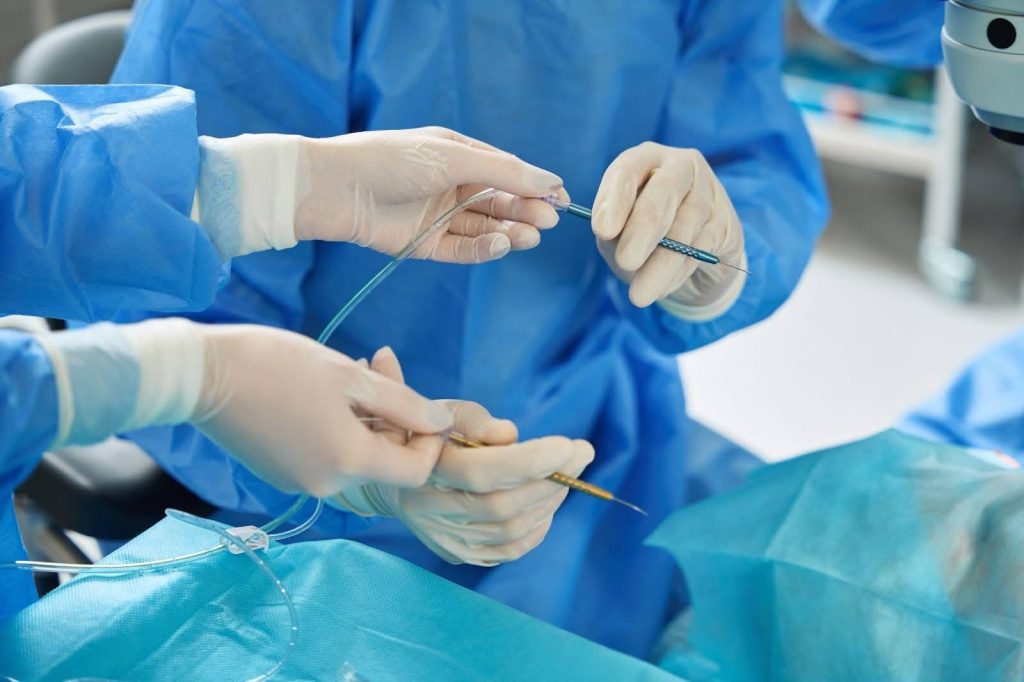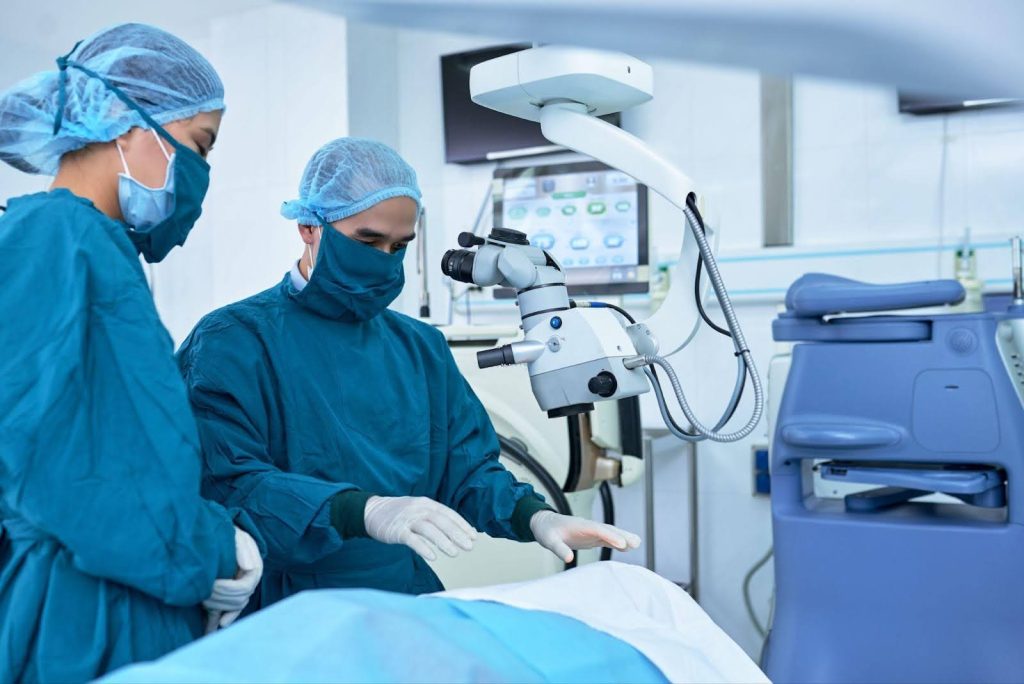Cataracts are a common eye condition that can significantly affect vision, particularly among seniors. This condition develops when the natural lens in the eye becomes cloudy, leading to blurred vision, difficulty in reading, and trouble with daily activities. While cataracts often affect older individuals, they can occur at any age due to different factors, including genetics, diabetes, and prolonged sun exposure.
However, cataract surgery can be an option to improve your vision and quality of life. But before considering and undergoing cataract surgery, you must consult a specialist to determine if it’s the best treatment option for your condition.
To help you understand what cataract surgery entails, we provide comprehensive information on the types of cataract surgeries so that you can make an informed decision on your treatment.
What Are the Three Types of Cataract Surgery?
When your cataract specialist recommends that you undergo cataract surgery to address your condition, there are three types to consider.
Here are the most common types of cataract surgeries they may recommend:
1. Phacoemulsification
Phacoemulsification, or phaco, is a cataract surgery technique. During phacoemulsification, the cataract specialist uses an ultrasound probe to break up the cloudy lens and suction it out through a tiny incision. This procedure often involves the implantation of an artificial lens called the intraocular lens (IOL) to replace the natural lens. The key advantages of phacoemulsification include its minimally invasive nature and quick procedure time, facilitating faster recovery and minimal patient discomfort.
2. Femtosecond Laser-Assisted Cataract Surgery (FLACS)
In this approach, a femtosecond laser is used to create incisions for accessing and fragmenting the cataract. The second stage closely resembles traditional cataract surgery, involving the removal of cataract segments through ultrasound-based phacoemulsification.
Leveraging computer-driven technology, the femtosecond laser takes over certain manual aspects of surgery. Its multifaceted advantages encompass several potential benefits. Firstly, it may enhance visual outcomes by consistently creating more circular capsulorhexis, thus reducing the risk of artificial lens misalignment. Secondly, the laser’s reduced ultrasound energy usage could potentially decrease the likelihood of corneal injuries. Thirdly, it may reduce the risk of surgical complications, particularly in cases involving complex cataracts. Additionally, femtosecond laser corneal incisions could potentially reduce astigmatism during cataract surgery.
However, know that femtosecond laser-assisted cataract surgery is still an evolving technique, with its full potential yet to be achieved by experts.
3. Extracapsular Cataract Extraction (ECCE)
Extracapsular cataract extraction begins by creating a minor cut along the outer periphery of the cornea. The surgeon subsequently gently accesses and opens the front part of the lens capsule. In cases where cataracts have progressed significantly, they can typically be extracted intact; however, for any smaller fragments, suction may be employed for removal. This procedure is typically performed for cases where phaco or laser-assisted surgery is not suitable due to the cataract’s size or density.
How Do I Know I Need Cataract Surgery?
You may be recommended cataract surgery if you experience vision impairment that hinders everyday activities such as reading, driving, or watching television.
Furthermore, you may be advised to undergo surgery, even if your cataracts are not the primary cause of your vision issues. For instance, cataract removal may be necessary to enable your doctor to effectively examine your eye’s posterior segment. This allows them to monitor and address other eye conditions, like age-related macular degeneration (AMD) or diabetic retinopathy.
Regardless of these, know that there’s no rush to undergo cataract surgery. You should discuss with your eye doctor the potential risks and benefits that come with the procedure to determine if it aligns with your needs and preferences. Additionally, it’s worth noting that if you have cataracts affecting both eyes, surgery will be required for each eye separately, typically with a time gap of approximately one month between procedures.
How Do I Prepare for Cataract Surgery?
Preparing for your cataract surgery typically involves several steps to ensure a smooth procedure and optimal recovery. Here’s what to expect before your surgery:
- One week before your scheduled surgery, the cataract specialist will conduct various tests to assess the size and shape of your eye. These tests are essential in determining the most suitable artificial lens (an intraocular lens or IOL) for your specific needs.
- The specialist will then prescribe eye drops to safeguard your eye against potential infections. These drops are a vital part of the pre-operative care regimen.
- Make sure to provide your specialist with a comprehensive list of any medications you are currently taking. If any of these medications have the potential to cause bleeding during the surgery, your eye doctor might recommend discontinuing them temporarily.
- You will be instructed to abstain from eating or drinking for several hours before your surgery, typically the night before. This fasting period is crucial to ensure a smooth and safe procedure.

How Is Cataract Surgery Done?
Regardless of the type of cataract surgery you and your cataract specialists decide on, the overall process follows a similar pattern:
- Before the surgery, the eye specialist will conduct a thorough eye examination to assess the eye’s health and determine the appropriate surgical approach. You may also discuss options for intraocular lens implants, which can address issues like nearsightedness, farsightedness, or astigmatism.
- Local anaesthesia is administered to numb the eye, ensuring patients are comfortable and pain-free during the procedure. They’ll be awake but relaxed throughout the surgery.
- A small incision is made in the eye to access the cataract. Its size and location may vary depending on the chosen surgical technique.
- This is where the selected surgical technique comes into play. Whether it’s phacoemulsification, femtosecond laser-assisted cataract surgery, or extracapsular cataract extraction, the goal is to safely and effectively remove the cataract from the eye.
- If necessary, an artificial lens (IOL) will be inserted to replace the natural lens. The choice of IOL will have been discussed with the cataract specialist beforehand.
- The incision will then be carefully closed with tiny sutures or allowed to self-seal, depending on the technique used.
How Long Is Cataract Surgery?
Cataract surgery is typically a quick and efficient procedure. It takes approximately 10 to 20 minutes, depending on the severity of the condition. However, you may expect to spend a few hours at the eye specialist clinic to allow for pre-operative preparation and post-operative observation. After the surgery, patients will be given specific instructions for post-operative care and follow-up appointments with their cataract specialist.
Making the Right Choice
Living with cataracts can be challenging, especially as an older adult. That’s why if you’re considering cataract surgery, make sure to choose a trusted eye specialist clinic so that they can determine the best approach for your unique needs. That way, you can achieve better vision and optimal quality of life for years. Once you’ve decided on the surgery with your eye specialist, you can also check out our insight on cataract surgery recovery to learn more about how to care for your eyes after the surgery.

Dr. Christopher Khng, specializes in Complex Cataract and Anterior Segment Reconstruction Surgery, in particular, Iris Reconstruction and surgery for Aniridia. His other areas of expertise include Complex Lens surgery, New Lens and Phacoemulsification technologies, Refractive surgery, Phakic IOLs (the Implantable Collamer Lens, ICL), and small-incision, topical anesthesia phacoemulsification cataract surgery. Dr. Khng is a member of the Singapore Medical Association (SMA), a Fellow of the American Academy of Ophthalmology, the American Society of Cataract and Refractive Surgery (ASCRS), and the European Society of Cataract and Refractive Surgery (ECSRS). He is registered with the Singapore Medical Council (SMC) in Singapore and with the General Medical Council (GMC) for practice in the United Kingdom.

